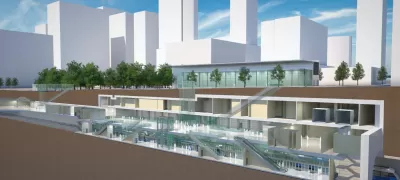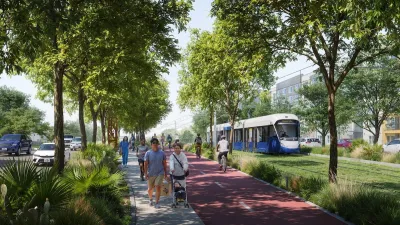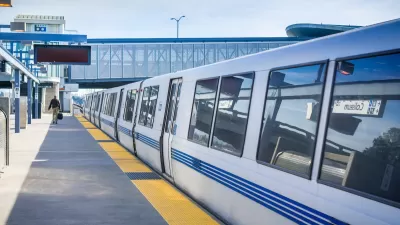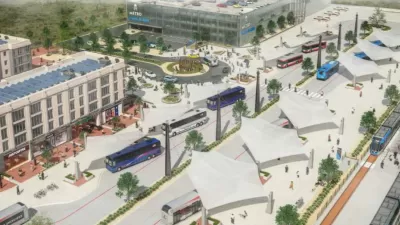The Texas capital is planning an ambitious light rail system that will include subterranean stations.

An article by Nathan Bernier for KUT outlines plans for Austin’s upcoming subway system, which will include some underground stations. “The most ambitious of Austin's light-rail plans would burrow four miles of tunnel beneath downtown and South Austin to connect six subterranean stations and create the city's first subway system.” However, “Project Connect's growing price tag — the cost of the transit tunnel alone has doubled to more than $4 billion — could force transit planners to scale back their underground aspirations.”
As the article states, “Each station would have highly visible entryways, minimal blind spots and natural light where possible. Stations could have amenities like stores, public restrooms, bike pumps and USB charging stations,” as well as escalators and elevators.
“The Austin Transit Partnership is trying to figure out how to stay under budget while costs soar due to the longer tunnel and inflation for everything from building materials to real estate that would be seized through eminent domain.” The article details proposed plans for the system’s other 20 stations, which vary from a ‘sidewalk entrance’ to a two-level station near the state capitol building, a major employer.
“For now, ATP planners are still expecting construction on light-rail to start in late 2024 or early 2025 with service starting 2029 at the earliest.”
FULL STORY: Here's what Austin's subway stations could look like

Alabama: Trump Terminates Settlements for Black Communities Harmed By Raw Sewage
Trump deemed the landmark civil rights agreement “illegal DEI and environmental justice policy.”

Planetizen Federal Action Tracker
A weekly monitor of how Trump’s orders and actions are impacting planners and planning in America.

The 120 Year Old Tiny Home Villages That Sheltered San Francisco’s Earthquake Refugees
More than a century ago, San Francisco mobilized to house thousands of residents displaced by the 1906 earthquake. Could their strategy offer a model for the present?

LA’s Tree Emergency Goes Beyond Vandalism
After a vandal destroyed dozens of downtown LA trees, Mayor Karen Bass vowed to replace them. Days later, she slashed the city’s tree budget.

Sacramento Leads Nation With Bus-Mounted Bike Lane Enforcement Cameras
The city is the first to use its bus-mounted traffic enforcement system to cite drivers who park or drive in bike lanes.

Seattle Voters Approve Social Housing Referendum
Voters approved a corporate tax to fund the city’s housing authority despite an opposition campaign funded by Amazon and Microsoft.
Urban Design for Planners 1: Software Tools
This six-course series explores essential urban design concepts using open source software and equips planners with the tools they need to participate fully in the urban design process.
Planning for Universal Design
Learn the tools for implementing Universal Design in planning regulations.
Ada County Highway District
Clanton & Associates, Inc.
Jessamine County Fiscal Court
Institute for Housing and Urban Development Studies (IHS)
City of Grandview
Harvard GSD Executive Education
Toledo-Lucas County Plan Commissions
Salt Lake City
NYU Wagner Graduate School of Public Service





























